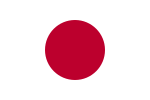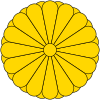
The Asahi Shimbun is one of the five national newspapers in Japan. Its circulation, which was 7.96 million for its morning edition and 3.1 million for its evening edition as of June 2010, was second behind that of Yomiuri Shimbun.
The Asahi Broadcasting Group Holdings Corporation is a certified broadcasting holding company headquartered in Osaka, Japan. Until March 31, 2018, it was a radio and television broadcaster serving in the Kansai region. On April 1, 2018, Asahi Radio Broadcasting Corporation took over radio broadcasting business, and Asahi Television Broadcasting Corporation took over TV broadcasting business, employees, and administrator for ABC website.
Sun Television Co. is a commercial television station headquartered in Kobe, Hyōgo Prefecture, Japan, and a member of the Japanese Association of Independent Television Stations (JAITS).
RKB Mainichi Broadcasting Corporation is a broadcasting station in Fukuoka, Japan, and it is affiliated with Japan Radio Network (JRN), Japan News Network (JNN) and TBS Network. It is owned by Mainichi Broadcasting System, Mainichi Shimbun and the Aso Group.
This article lists and describes the features of mass media based in Saitama Prefecture of Japan. Most are based in the capital and most populous city Saitama City's Urawa ward. Unless mentioned otherwise the language is Japanese.

Kaho is the professional name of Kaho Indō, a Japanese actress and fashion model. Kaho has won multiple Japanese entertainment industry awards, including a Hochi Film Award, a Nikkan Sports Film Award, and a Japan Academy Prize.
The Sky PerfecTV! Adult Broadcasting Awards are given for performances in adult video programs shown on SKY PerfecTV! satellite TV channels in Japan. The awards complement those presented by the AV Open / AV Grand Prix contests which are given for adult videos sold in retail outlets or on the internet.

Fukuoka Broadcasting Corporation is a Japanese TV station affiliated with Nippon News Network (NNN) and Nippon Television Network System (NNS) in Fukuoka, Fukuoka Prefecture, Kyushu, Japan. This station broadcasts programs throughout Fukuoka Prefecture as well as most of Saga Prefecture.
Kiyoshi Kodama was a Japanese TV personality and actor. He hosted the Asahi Broadcasting Corporation quiz show Panel Quiz Attack 25 continuously for thirty-six years from its start in April 1975 until he was forced to step down due to poor health at the end of March 2011. His signature catchphrase on the show is "Attack Chance!"

Nippon BS Broadcasting Corporation is a private satellite broadcasting station in Kanda, Tokyo, Japan. It is an independent television station and is a subsidiary of Bic Camera. Its channel name is BS11 and was BS11 Digital until March 31, 2011. It was founded as Nippon BS Broadcasting Kikaku on August 23, 1999, changed its name to Nippon BS Broadcasting on February 28, 2007 and high-definition television broadcasts commenced on December 1, 2007.
Yūki Himura (日村 勇紀, Himura Yūki, born 14 May 1972, in Kurose, Higashihiroshima is a Japanese comedian, actor and voice actor. He performs tsukkomi in the comedy duo Bananaman. His partner is Osamu Shitara. Himura married Aika Kanda, a Television announcer in April, 2018.
NGT48 is a Japanese idol girl group produced by Yasushi Akimoto. NGT48 is named after Niigata City of Niigata Prefecture, where the group is based. The group performs at the NGT48 Theater which is located in the fourth floor of the LoveLa2 shopping mall in Niigata City.

Eleonora Aureliana Guglielmi, best known as Yuriko Tiger, is an Italian cosplay celebrity, promotional model, YouTuber, voice actress, actress and Idol.
Hideyuki Nakayama is a Japanese tarento, presenter, actor, and comedian. He is nicknamed Hide-chan (ヒデちゃん) and Hide-san (ヒデさん).
Rie Shibata is a Japanese actress and comedian. She is also the special deputy mayor of Toyama, Toyama. She is the Ambassador of kombu in Rausu, Hokkaido.
Risa Hayashida is a Japanese announcer, television reporter, television personality, and news anchor for NHK. She is the anchor for NHK's local news program Shutoken Network. She was the co-host for NHK's geological TV series Bura Tamori, as well as a newsreader for morning news show NHK News Ohayō Nippon.
Hio Miyazawa is a Japanese model and actor. He was born in San Francisco, United States.
Haraichi is a Japanese comedy duo (kombi) consisting of Yū Sawabe (澤部佑) and Yūki Iwai (岩井勇気). They have featured in a number of Japanese television shows. They are employed by Watanabe Entertainment, a talent agency based in Tokyo.
AbemaTV (アベマティーヴィー) is a Japanese video streaming website owned by the entertainment company, AbemaTV, Inc. that provides over-the-top media services to customers in Japan. The website primarily acts as an online television network, with multiple channels including news, sports, entertainment, anime and more. Users can watch most channels for free with the option to become a premium member, allowing them to view past programs on demand. AbemaTV is owned by AbemaTV, Inc., which itself is 55.2% owned by CyberAgent, Inc. and 36.8% owned by TV Asahi, with the remaining ownership by various other companies, most of them in the media and entertainment industry.
Shinobu Sakagami is a Japanese tarento, essayist, film director, television presenter, singer and actor. Sakagami entered the entertainment industry at the age of 3 as a child actor, marking him one of the longest tenured in the industry for his age.






